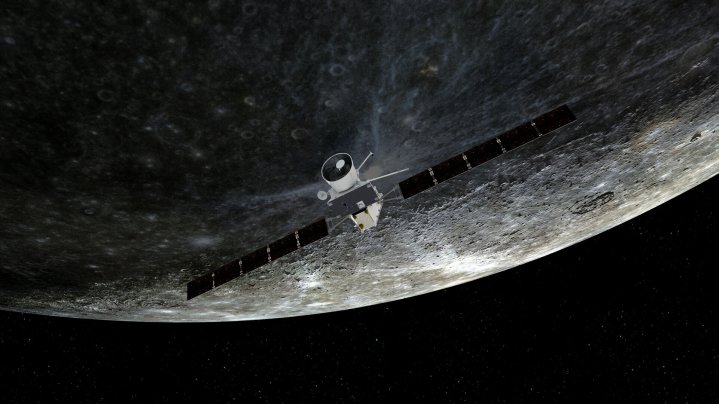The European Space Agency (ESA) launched the BepiColombo mission in 2018, and it is set to enter orbit around Mercury in 2025. In the meantime, it will be making several flybys of the planet, including a close approach today. That’s because the spacecraft’s route takes it on a series of increasingly close flybys that use the planet’s gravity to adjust its course each time.
In total, between its launch in 2020 and its arrival in Mercury orbit in 2025, the spacecraft will make one flyby of Earth, two of Venus, and six of Mercury. The Earth and Venus flybys are already complete, and today BepiColombo is making its third Mercury flyby, coming within 150 miles of the planet’s surface.

The maneuver will help to slow the spacecraft down so that it can eventually enter orbit. “As BepiColombo starts feeling Mercury’s gravitational pull, it will be traveling at 3.6 kilometers per second [2.2 miles per second] with respect to the planet. That’s just over half the speed it approached with during the previous two Mercury flybys,” explained ESA flight dynamics expert Frank Budnik in a statement. “And this is exactly what the point of such events is. Our spacecraft began with far too much energy because it launched from Earth and, like our planet, is orbiting the sun. To be captured by Mercury, we need to slow down, and we’re using the gravity of Earth, Venus and Mercury to do just that.”
Even though the spacecraft will just be passing by the planet, scientists involved in the mission still wanted to make the most of the opportunity. Many of BepiColombo’s instruments are now on, including those for measuring magnetic fields and plasma. These instruments will collect data on the environment around Mercury during the flyby, and the spacecraft’s altimeter and radio test experiment will be turned on too.
“Collecting data during flybys is extremely valuable for the science teams to check [that] their instruments are functioning correctly ahead of the main mission,” says ESA’s BepiColombo project scientist Johannes Benkhoff. “It also provides a novel opportunity to compare with data collected by NASA’s Messenger spacecraft during its 2011 to 2015 mission at Mercury from complementary locations around the planet not usually accessible from orbit. We are delighted to already have data published based on our previous flybys that generated new science results, which makes us even more excited to get into orbit!”
If you’d like to keep track of BepiColombo as it travels through the solar system, you can head to ESA’s Where Is BepiColombo page to see its current location.



